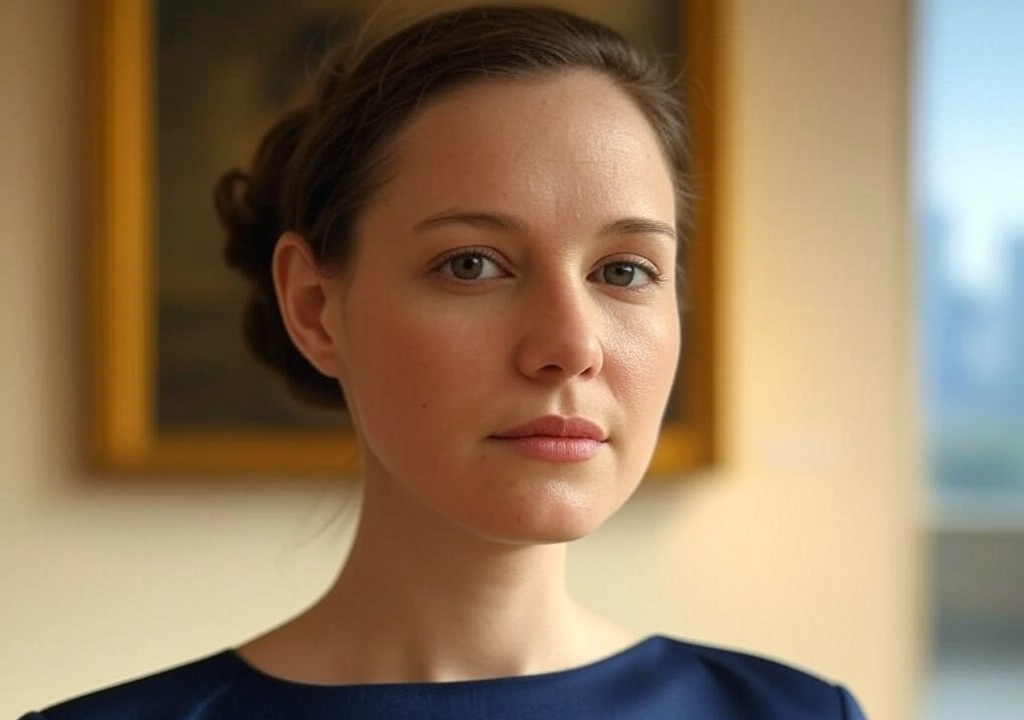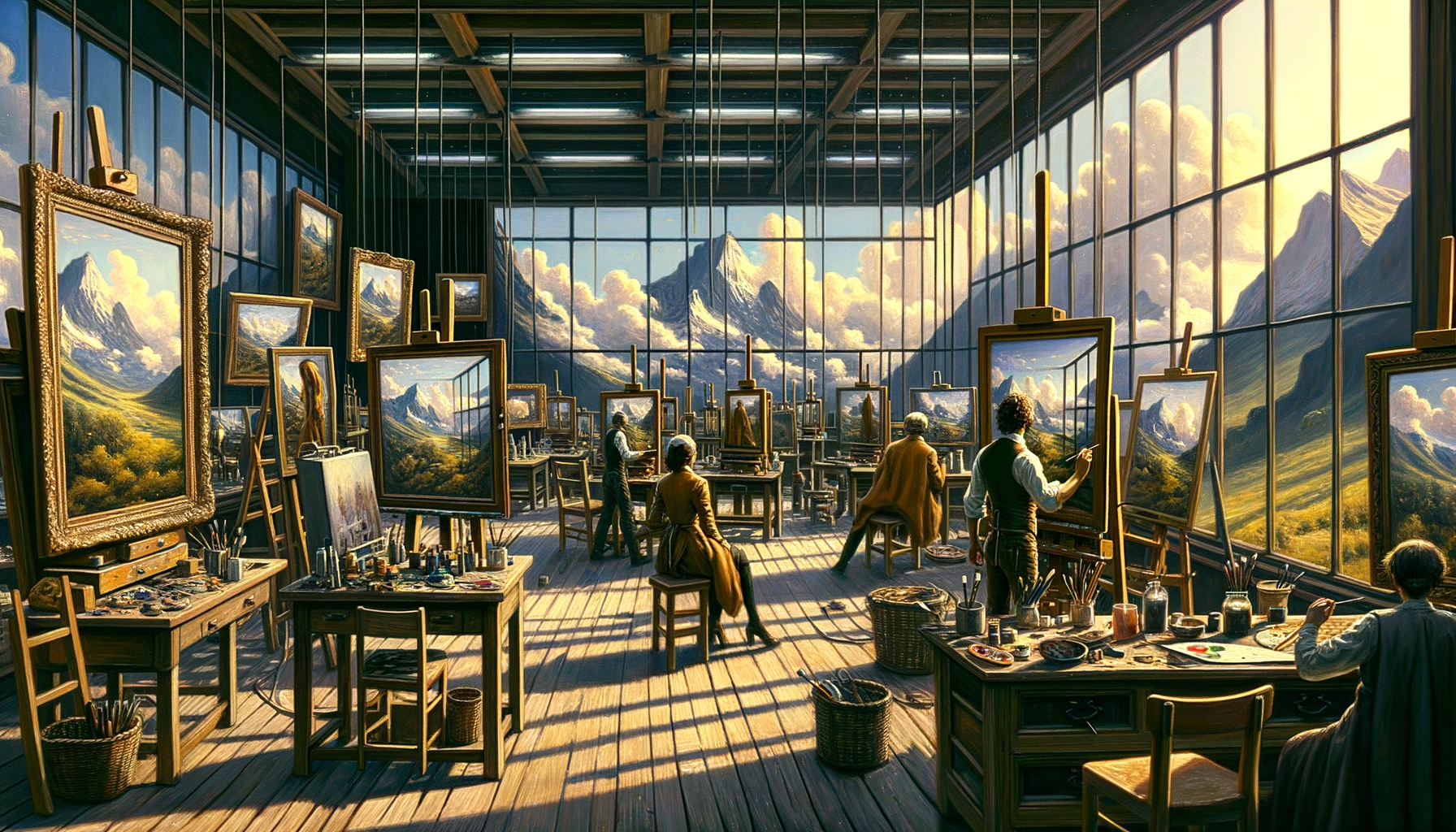“Oh, So You Just Look at Paintings All Day?” And Other Misconceptions About My Job
When someone asks me what I do for a living, experience has taught me to brace myself for one of two reactions: a glazed-over nod punctuated by polite confusion or, my personal favorite, an enthusiastic, totally-off-the-mark declaration like, “Wow, you must have seen The Da Vinci Code so many times!” For the record, I haven’t.
I work in the art world, specifically as a writer and former curator who’s navigated the labyrinth of private collections, museum acquisitions, and gallery openings. If you’ve ever envisioned my day-to-day as sipping champagne next to some tortured genius in a Parisian atelier à la a Dior commercial, I hate to disappoint you—but let’s clear a few things up (preferably over a real glass of champagne).
Myth #1: “Your Life Must Be So Glamorous!”
First, let’s address the elephant in the gallery: the glamour. Sure, I’ve attended my fair share of gala dinners and sipped bubbly at white-walled openings, but here’s the unfiltered reality—there’s just as much grit as there is glam.
Do you think curating an exhibit is like arranging Instagram-worthy flat lays of flowers on a desk? Wrong. Curating often involves sweating bullets under glaring fluorescent lights in a storage facility, unpacking crates of glorious-but-awkwardly-large sculptures (that inexplicably weigh more than a baby grand piano). It’s ladders, gloves, and enough paperwork to make a tax season junkie giddy.
And don’t get me started on the fashion. Yes, there’s plenty of black linen chic floating around, but most of the time I’ve got a stain from coffee…or paint…possibly wine (art imitates life, after all). My brand of selecting outfits isn’t so much “couture” as it is “what won’t embarrass me when I inevitably crawl under a massive crate to retrieve a dropped catalog?”
If my workday sounds like the romantic chaos of a rom-com costarring Meryl Streep and a slightly haggard art student—well, close, but imagine Meryl also has to negotiate loan agreements for a Rembrandt.
Myth #2: “It’s Just Looking at Pretty Things, Right?”
Oh, sweet summer child. If only it were that simple. Sure, on the surface, part of the job is about engaging with beautiful objects. But what lies beneath the surface of a painting (aside from centuries of varnish and questionable restoration attempts) is a whole world of logistics, research, negotiations, and story-weaving.
Let me paint you a picture (pun intended): creating an exhibition isn’t like casually decorating your living room. It’s about constructing a narrative. Why does this sketch by Degas matter today? Who benefits from contextualizing it? What politics or historical significance linger in the frame? It’s my job to answer these questions, and nothing about this process is as “pretty” as people assume.
Did you know museums procure items with the finesse of a spy ring? Any given day involves emails peppered with daunting legal terms like “provenance,” the occasional phone call to a private collector with a penchant for one-word e-mails, and coordinating flights for paintings more well-traveled than I am.
So yes, art is pretty—but pondering, “What’s the best lighting to balance both Monet’s brushwork and audience foot traffic?” is decidedly less poetic.
Myth #3: “You Must Be Rich to Work in Art.”
Ah yes, the classic assumption that surrounds the art world like an ornate (and wildly expensive) gilded frame. Let me tell you something: while I was writing my thesis in Oxford, surviving on little more than tea and the memory of a good croissant, I realized that financial stability in the art world was less a reality and more of a mythic unicorn: rumored but rarely spotted.
Here’s a truth bomb: many professionals in the art field—including your favorite gallery associates, historians, and yes, writers—are fueled less by money and more by a profound, almost irrational love for what they do. It’s less about financial affluence, and more about passion. That said, a strategic side hustle helps (hence why I write about everything from deepening your relationships to decoding modern dating).
Does this translate to meeting wealthy patrons or enigmatic artists at rooftop parties? Yes—but more often, it means frantically splitting Ubers with your colleagues, sending polite-but-firm “Hey, about that overdue invoice…” emails, and budgeting for overpriced exhibit catalogs because who can resist?
Myth #4: “Art Is an Elitist Bubble.”
This one’s tricky because… well, I can’t totally deny it. The art world has an elitist reputation, and sometimes, it more than earns it. (You try being the only person in a talk about abstract expressionism who dares to ask what on earth a “dynamism of forms” means—spoiler: no one will answer directly.)
But here’s the thing: art is fundamentally about connection. That’s one of the reasons I started writing about art and relationships—they intersect more than you’d think. Relationships are about asking questions, peeling back layers, and finding meaning in the stories we tell ourselves and each other. Art is the same. It’s a conversation, an invitation to dialogue—not a monologue meant to alienate anyone without a degree in semiotics.
One of my favorite experiences was working with a school group on an installation. Watching kids respond to art with raw emotion, entirely unaware of how they’re “supposed” to react, reminded me why I love this work. It’s not about exclusivity; it’s about human moments.
Myth #5: “Artists Are All Brooding and Sexy.”
Okay, I get it. Blame Hollywood (and probably Pablo Picasso). There’s a pervasive stereotype of artists as tortured souls, chain-smoking in dimly lit cafes, only breaking their smoldering squint long enough to whisper revolutionary ideas about light and shadow.
The reality is… less noir. Nothing crushes the “brooding artist” fantasy like seeing the mundane hustle behind their work: emails about grant deadlines, frustrated yells because someone ordered canvas boards 3 inches too short, and endless phone calls with galleries over consignment terms.
Artists are real people, and just like dating, the fantasy rarely matches reality. Sure, some are sexy and brooding, but others... well, others are just regular folks who occasionally forget their studio reeks of turpentine. (Pro tip: if you date an artist, never critique their “mess” unless you want your likeness unknowingly painted into a piece titled The Betrayer.)
The Truth About the Art World
If there’s one thing I’ve learned from my years amongst Rembrandts and romantic flings punctuated by gallery openings, it’s that art (and life) isn’t perfect—it’s perfectly messy. Just like relationships, art requires effort and patience. It’s about seeing through the chaos and falling in love with the details, imperfections and all.
So, the next time someone tells me, “Oh, you must have such a glamorous job!” I’ll smile and nod before launching into a debate about humidity control protocols or my latest existential crisis over color theory. You’ve been warned.
Art, love, and work—it’s all just a beautiful, chaotic dance. And for that, I’ll gladly stay on the dance floor. How about you?




















